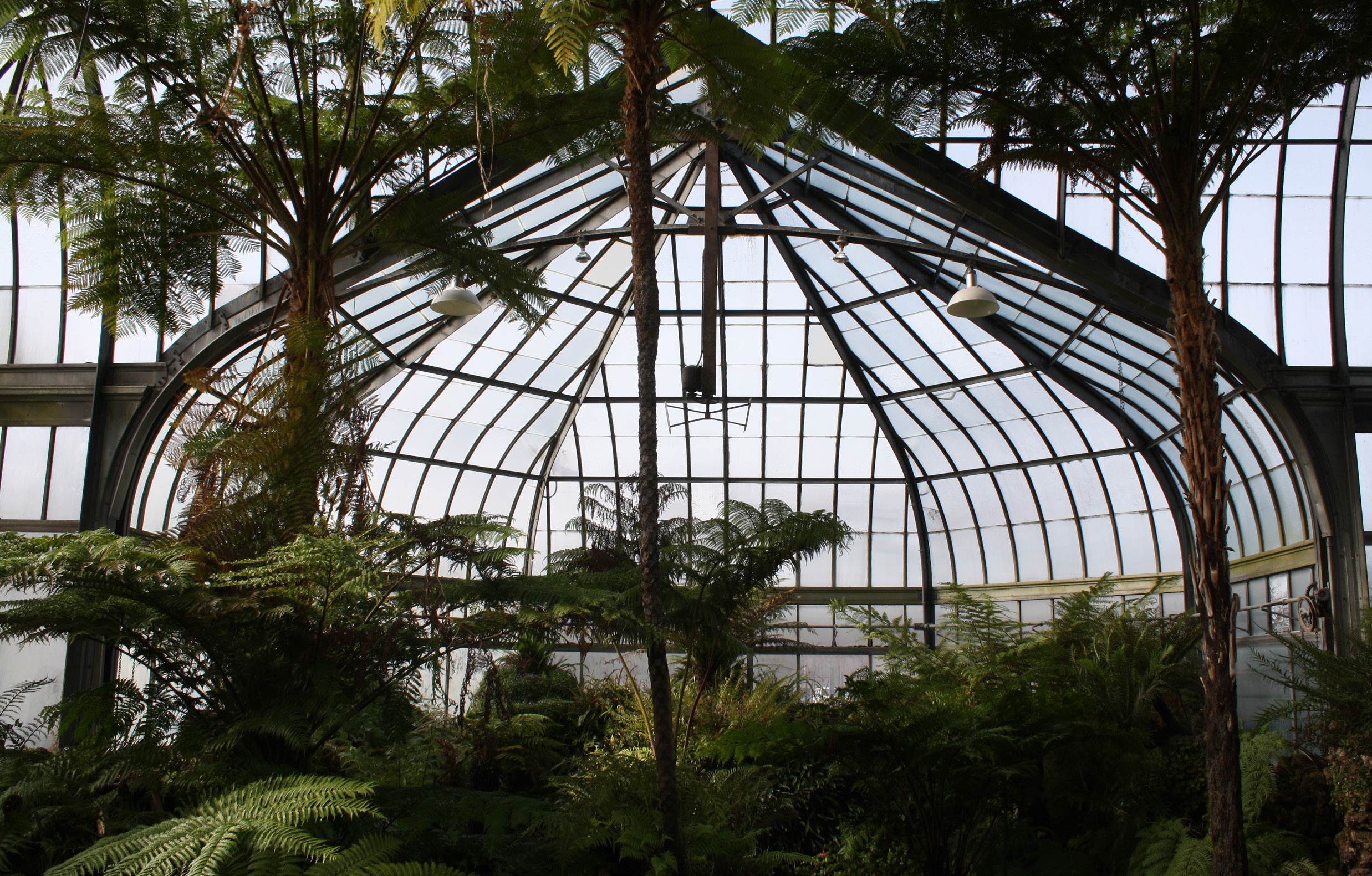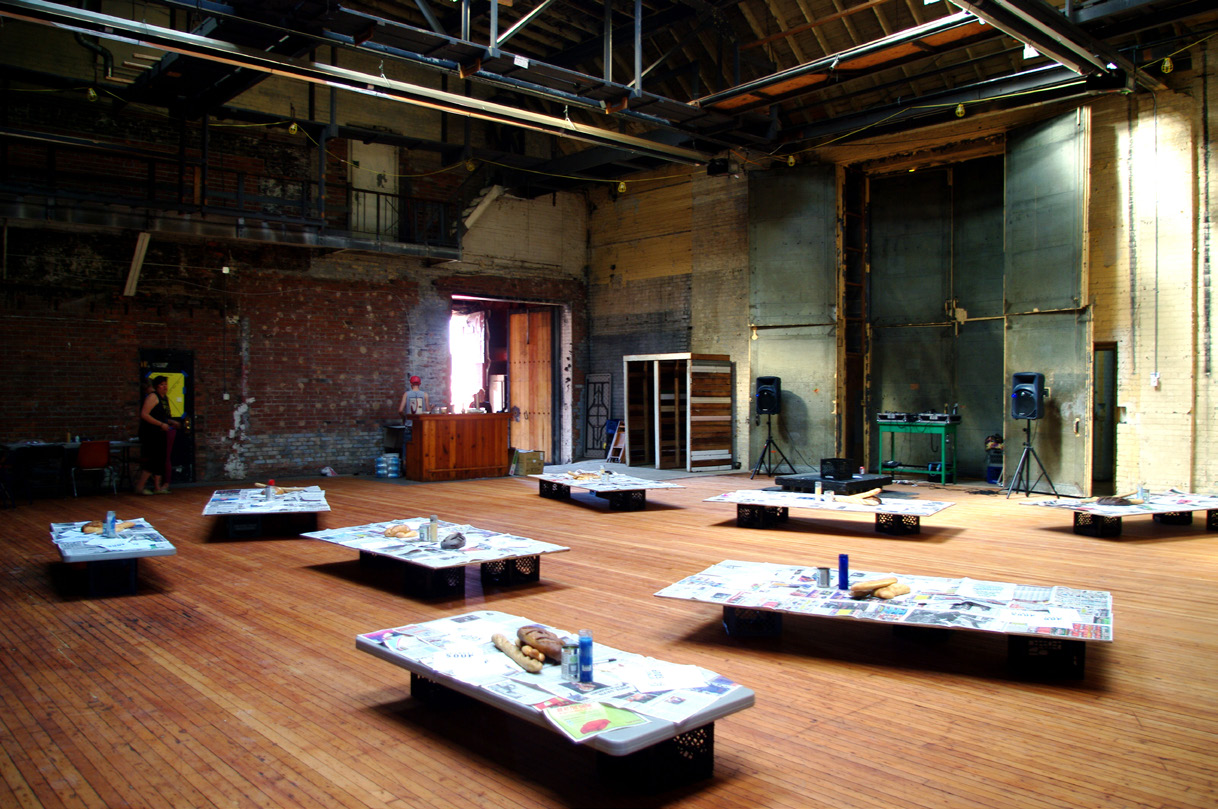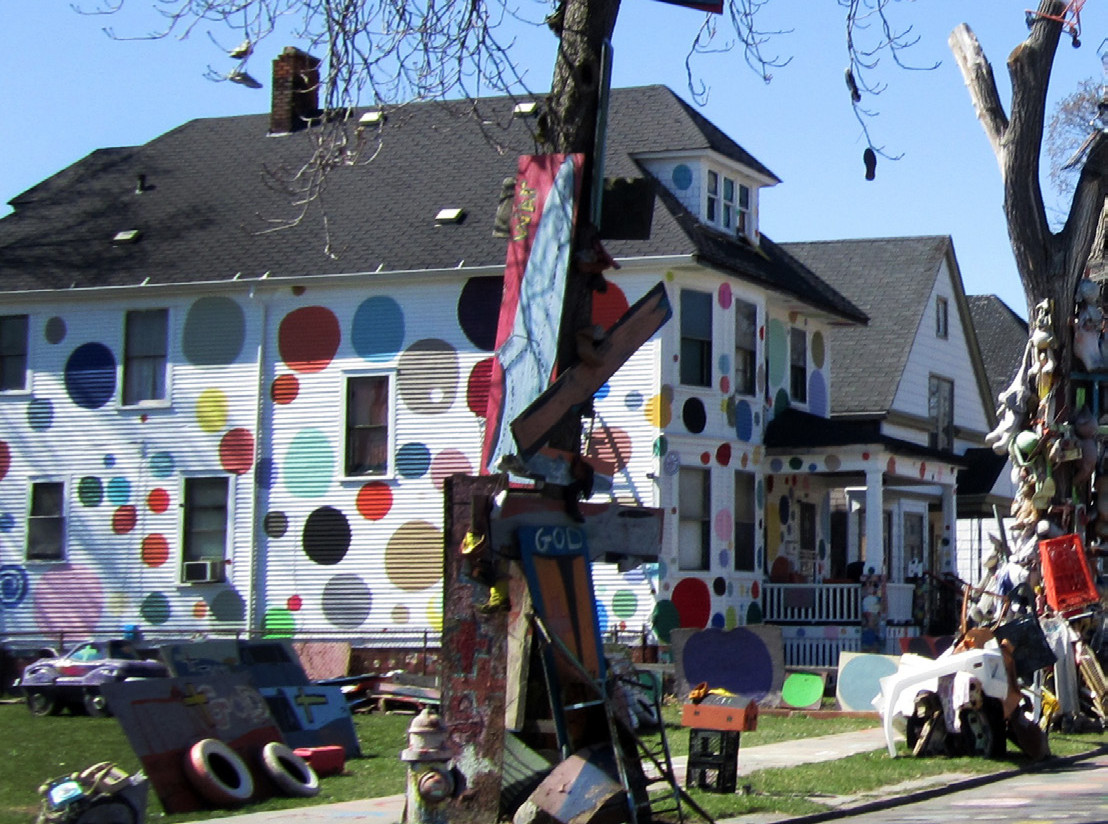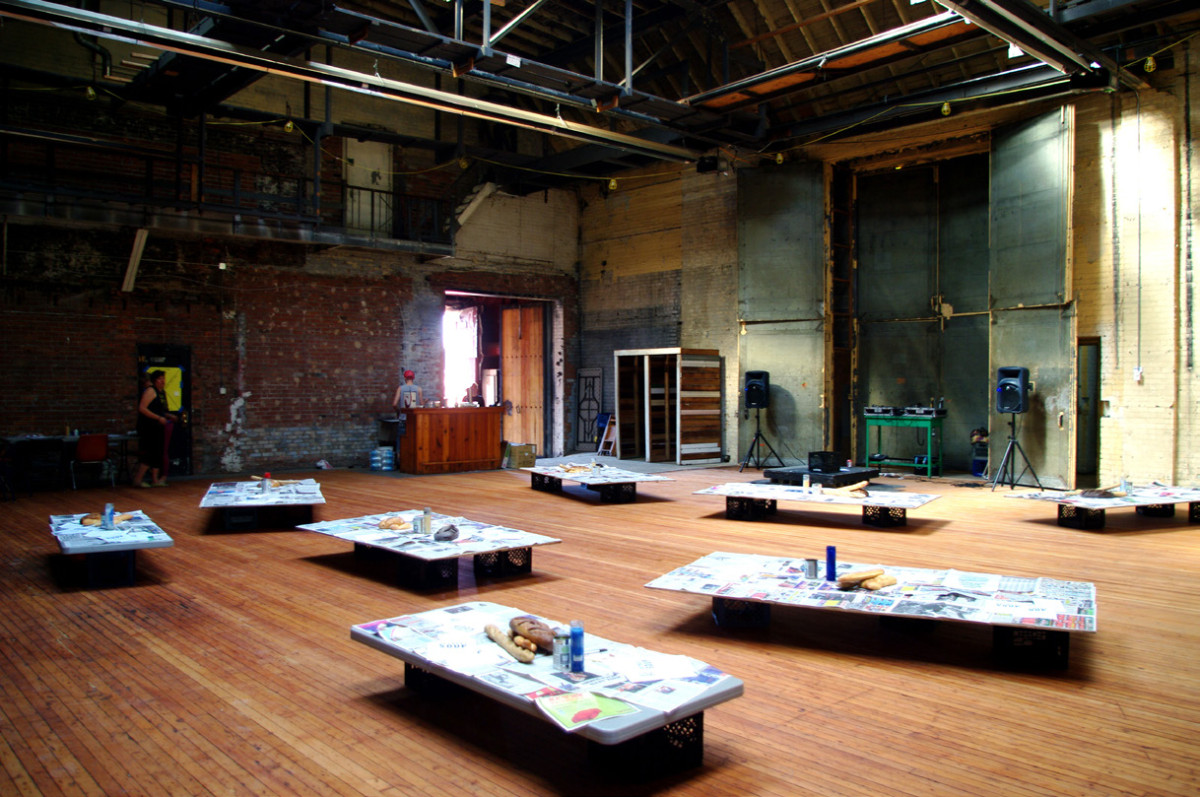Introducing Detroit Research:
A journal of contemporary art and culture

Belle Isle Conservatory
Image courtesy of Biba Bell
Conviviality: the opposite of industrial productivity / the autonomous and creative intercourse among persons, and the intercourse of persons with their environment / the individual freedom realized in personal interdependence and, as such, an intrinsic ethical value / in any society, as conviviality is reduced below a certain level, no amount of industrial productivity can effectively satisfy the needs it creates among society’s members.
Ivan Illich, Tools for Conviviality, 1973
Where then is the city?
Maurice Blanchot, Thomas l’Obscur, 1941
Detroit, the Idea of Detroit, as the title of a poem by the late Jim Gustafson would have it, has been much in the news, and that news has been economic, industrial, urbanist, political, and philanthropic. The news about Detroit, both outside and inside Detroit, has been dominated by an iconography of ruination (a nice eighteenth-century word) or, the obverse, an energetic boosterism. Each deserves the other. Great cities have been ruined by war (Budapest) or economic mishandling (Gerald Ford to New York: Drop Dead!) and recovered. No great city needs – or has ever been aided by – boosterism. It has been said and it bears repeating – see the exhibition catalogues from MOCAD and Cranbrook’s show Shrinking Cities of 2007 – that there is not a single problem which Detroit has which is unique to Detroit, for the problems encountered by Cleveland, Pittsburgh, Leipzig, etc. are structural problems linked to an economic system undergoing profound change at the global level. That being said, we must live – and indeed survive – such change, and in so doing come to understand much about our place in the changing world. Having made its many contributions in culture, industry, and war (The Arsenal of Democracy!), the established Idea of Detroit is exhausted, and with it the old narratives; indeed, the sense of crisis that so often accompanies any talk about Detroit is in large part due to the absence of a new narrative to take the place of the old, exhausted narrative centered around industry and the machine for the creation of the middle class. This is the crisis of representation in Detroit which is also the main cultural crisis. The Idea of Detroit is at a turning point as the image of the city, and the nature of participation in the polity, is once more in crisis and therefore in a process of urgent re-definition the mark of which is that the outcome remains open. As so often, the arts in Detroit, the changing status of the arts, the questions as to what kinds of things, actions, or processes can even count as “art,” have become the image or stand-in for attempts to think through and think about the Idea of Detroit as one form of Detroit is in train of dis-appearing and the Detroit that is yet-to-come is still hovering within the light of the horizon. The appearance of the Museum of Contemporary Art in Detroit in 2006 represented one response to the existing crisis in the attempt to provide an architectural medium to facilitate the giving of form to the possibilities of a distinctive contemporary art practice amidst the economic voids left by a City unable to engage with any but essential services – as if, that is, art were a luxury. The Detroit Institute of Arts, on the other hand, one of the great cultural institutions of the country, has become an image of this crisis as the argument about ownership of the contents of the museum oscillates with profound discomfiture between the legal, the political, and the cultural. The standard practice of municipal museum stewardship in this country – for example, with the Metropolitan Museum in New York, The Museum of Fine Arts in Philadelphia, the Art Institute of Chicago, and, indeed the Detroit Institute of Arts – has been that the City gave the land on which the museum was built, possibly shared in certain aspects of responsibility, say, security in the case of the Met in New York, but otherwise left the museum to run itself without economically burdening the City. The Boards of these museums were responsible for all fundraising for acquisition and operations in order to unburden the city economically, but by having a notional share in ownership – in the land, or in security, with representation on the Board – the City could ensure that there was cultural representation in the museum of its citizenry whose land was the gift to enable the foundation of the museum. Ownership, thus, was democratic representation and not financial title, for should the City decide suddenly and unexpectedly to claim financial title over the art as property the Board could just as easily lay claim to be re-imbursed the hundreds of millions of dollars it dispensed over decades on the clear understanding that it was disburdening the City of financial responsibility in perpetuity. This was a compact and such a compact is still in effect at most of the great municipal museums of the United States, but such a model was not straightforwardly the case for the DIA, but in its many permutations there was always a sense of compact.

(The complex history of ownership and title as regards both works of art and the DIA itself has been studied by Jeffry Abt in his book A Museum on the Verge: A Socioeconomic History of the Detroit Institute of Arts, 1882-2000, Wayne State University Press, 2001; drawing upon Abt and his own considerable experience as a reporter on the arts beat of Metro-Detroit, Mark Stryker has done us all a considerable service in making the complex history of ownership in relation to the DIA manageable. See his September 8, 2013 article for the Free Press, “DIA in Peril,”. Suffice it to say that the City in the form of the Emergency Financial Manager holds the cards of title, but nothing is so clear cut as to leave the DIA without means of self-defense, all be it limited means of self-defense.1(For example, the legally binding terms of the great Tannahill bequest of 1969 were explicit that if a single one of the works gifted by Robert … )
As with all compacts, however, the moment there is a breach of trust, or social collapse, there is confusion and chaos as “legal” rights are asserted where there is no longer any agreed history and understanding of foundation or purpose. The moment the current Emergency Financial Manager of Detroit asserted legal title to the contents of the DIA’s collections on behalf of a bankrupt City - a claim which can readily be challenged with the right legal theory but without any guarantee of success and most likely as a form of “guerrilla warfare” against the Emergency Manager– crisis was bound to ensue since the practices and compact upon which the DIA and all other institutions of its kind were founded – and had every reason to expect to run into the foreseeable future – were broken in a way which had little to do with contract law and everything to do with customary practice. To the DIA’s “This is not how things were supposed to work when the DIA was founded and the Board assumed financial responsibility,” the EFM simply says, “Show me the note.” The point here is that the crisis of the DIA, the crisis of the arts in Detroit, is the image of a larger political crisis, in this case, the most prestigious of the traditional arts institutions in the region – the greatest social capital, in other words - is caught in a tangle which is not strictly legal but the result of larger economic and political collapse and implosion of the tacit trust (pistis) upon which all human intercourse is based. The DIA’s plight, it may be said, is symptomatic of a larger problem for which there is no obvious solution until a political resolution in the larger sphere becomes viable. It is not a legal problem first and foremost, and that is why it is also a cultural-political problem. Such is the perpetual role of art, not to offer solutions but to become the medium of problems or aporias as the language of criticism would put it today, that is, puzzles for which there are no solutions, dilemmas out of which there is no escape.2(Since this introduction was written the grown-ups in the room, led by the U.S. District Judge Gerald Rosen, the judge in charge of the mediation … )
It remains, though, that the crisis is present throughout “Detroit,” throughout, that is, the Idea of Detroit, for the arts, or the artistic practices of Detroit, are amongst the things most discussed about Detroit outside Detroit – in Europe, Asia, and even Latin America – and as such have come to represent the Idea of Detroit: the problems, possibilities, fears and hopes. It cannot be denied that the arts in Detroit have received exceptional attention and even, one might say, Care, in the form of deep and thoughtful funding from foundations such as the Kresge, the Knight, the Erb, Skillman, etc. (the list is by no means short) even as the Council of the City of Detroit is all but entered into formal economic (and political) bankruptcy. Not since the 1960s has the divide between civil and political society been so large, and the image of this divide is the very thing that has been most alive and urgent in recent times in Detroit, namely, the new art practices so much of which have found their support outside of the traditional forms of patronage. And yet, there is no journal, that is, no forum, devoted to capturing or exploring the new art and experimental cultures emerging in Detroit these past fifteen years; indeed, there is scarce any fully developed critical language for the forms of new art practices and experimental cultures emerging in Detroit and which, like it or not, are shaping the Idea of a Detroit in the process of emerging.
The principal aim of Detroit Research will be the development of a critical vocabulary for representing the new kinds of art practices emerging in Detroit and the social, aesthetic, and ethical issues which are at the core of these practices. For works of art to attain the level of appreciation of common standards they must be collected, exhibited, and, crucially, written about. Detroit has major private and public collections, many exhibitions venues – beyond the official – but there is relatively little writing of a critical kind that places the new practices in a larger national and international framework of critical practice. Though studio art will not be neglected, the aim of Detroit Research is to reflect upon the art, the mostly post-studio art (in dance, performance, social practice, along with new thought in urban thinking) which has not yet found its critical vocabulary in Detroit. Detroit Research will be the first journal dedicated to capturing and nurturing a new visual and critical vocabulary for the kinds of art and playful investigations in social practice, public engagement, and experimentation in geography, urbanism, communal living (The Boggs Center, for example), urban gardening, and the use of food in socially innovative ways along with dance, performance, and music. Detroit Research aims not only to facilitate outlets for a new type of art-urban cultural writing, it will also regularly document historically important moments in the recent cultures of Detroit: ecological thought, the African-American contribution to urban gardening, etc. It is to be hoped that the reach, amongst artists, writers and thinkers, will be regional, national, and international, and will thereby contribute to the comprehension of the changing image of an emergent Detroit. We propose a new set of terms for understanding post-Studio practice both within and beyond Detroit by considering Biopolitics, Critical Theory, experimental geography, artist research, and social engagement.
Detroit is a place, but it is also a critical function – the Idea of Detroit which is not only now being contested but has always in some sense been contested, though it is only in times of crisis (1805, 1943 …) that the terms of contestation become visible; as critical function, Detroit is also the possibility of re-thinking the idea of the City. We are Detroit Research because the operant idea of art practice has long moved beyond the creation of studio art for the fulfillment of optical stimulus or the repetition of formulae, both romantic and academic. Research means thought, investigation, historical sensibility, contingent hybrid formations, and the reflexive act of construction within the field of the Open, which is also the field of playfulness. In time, we hope that the journal will become open for practitioners in Art / Research from far afield the effect of which would be to establish the terms of a rich conversation on art practice (and education?) in a state of transition.
The opening format of each issue of Detroit Research will be a theme (for vol. 1 that theme is space), an artist in focus (in this issue that artist is the multi-media artist-thinker Scott Hocking), and a guest editor. In future issues guest editors will include dancer and performance scholar Biba Bell (choreography and post-studio dance), the social activist Amy Kaherl (of Detroit Soup), and sound artist and public engagement practitioner Jon Brumit with sculptor Sarah Wagner. Future artists in focus will, we hope, include Kevin Beasley, Shiva Ahmadi, Michael E. Smith, and others. Detroit Research will appear twice yearly in Spring and Fall. We hope, dear Reader, that you will find much food for thought in these new pages of a Detroit being written all around us.

References
